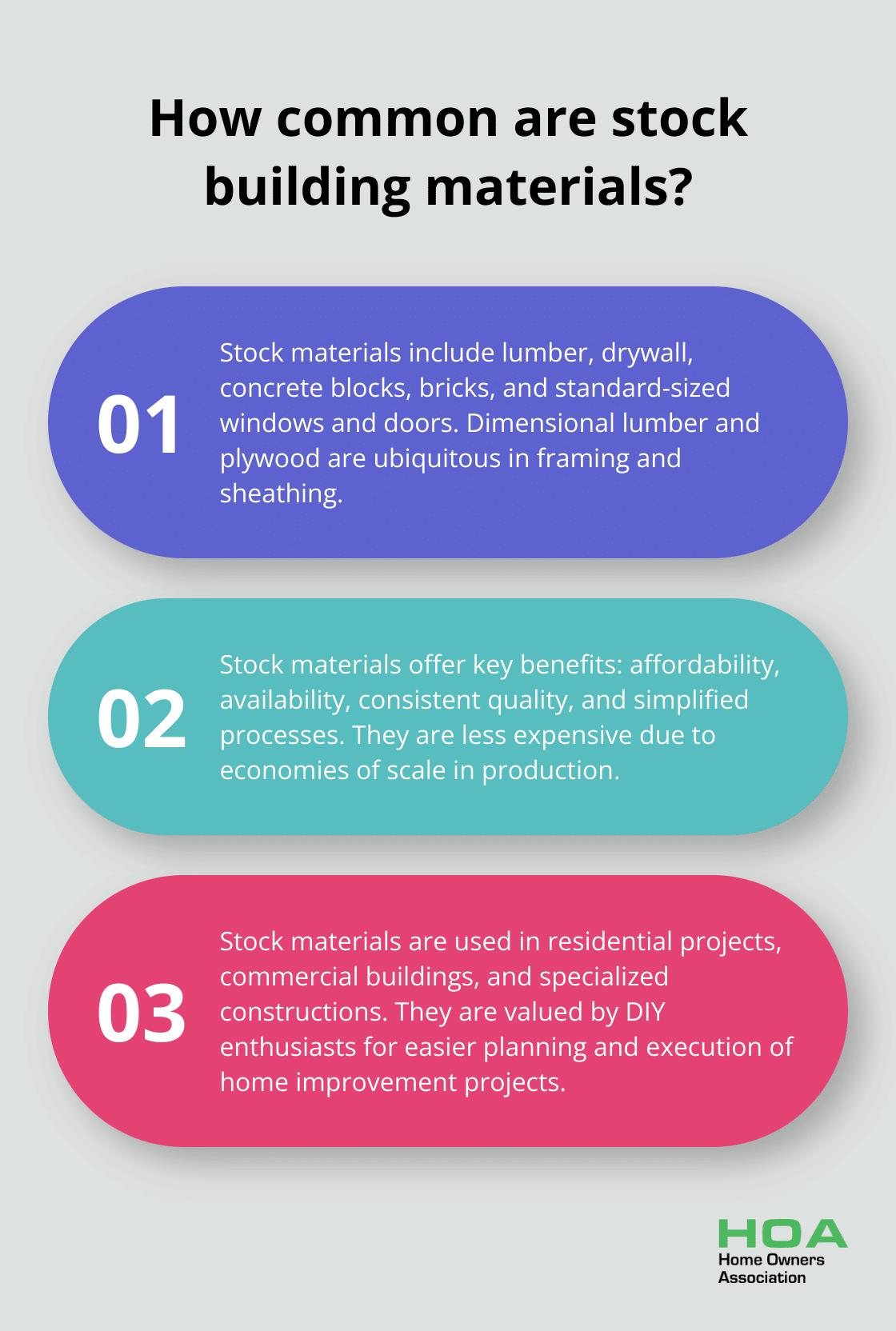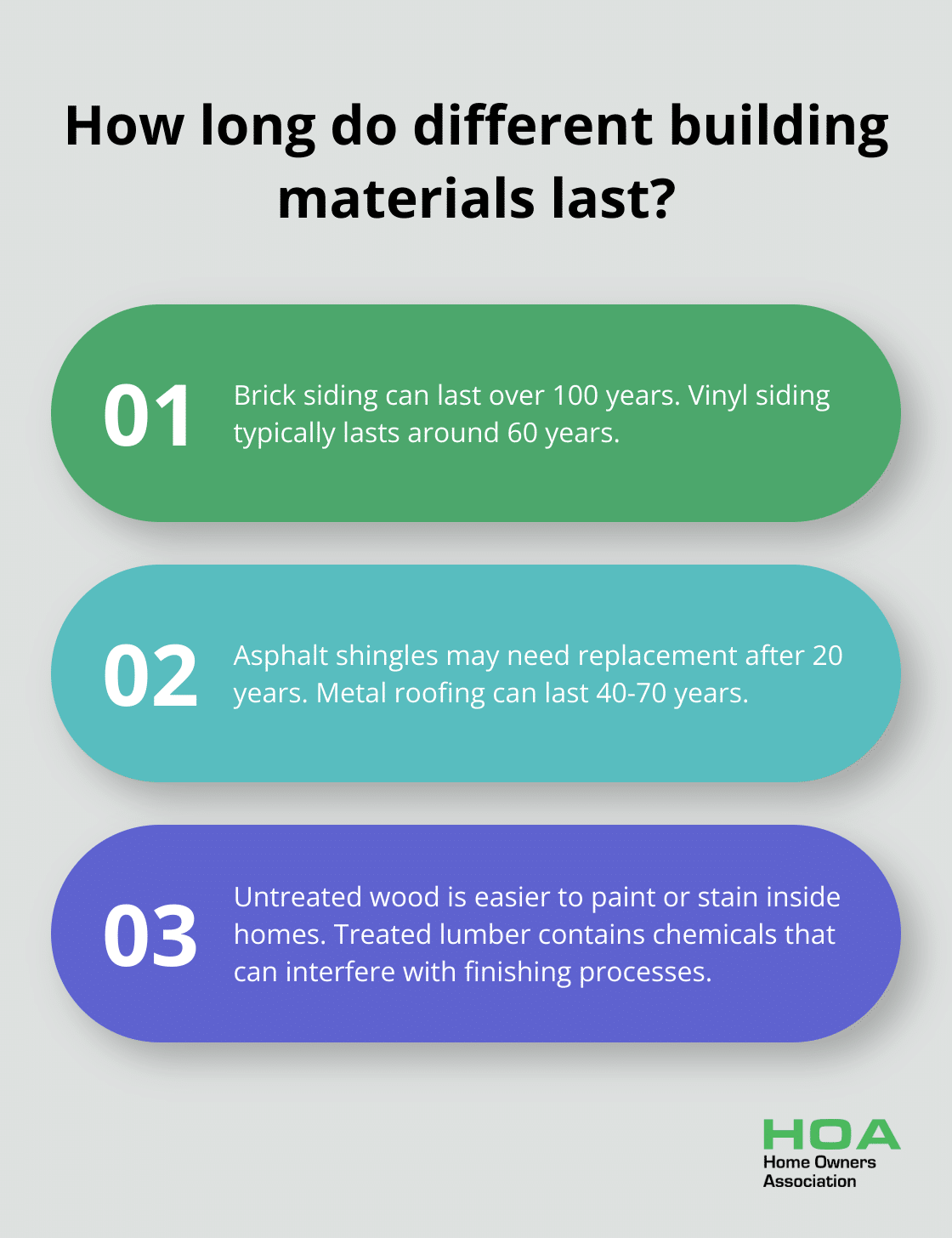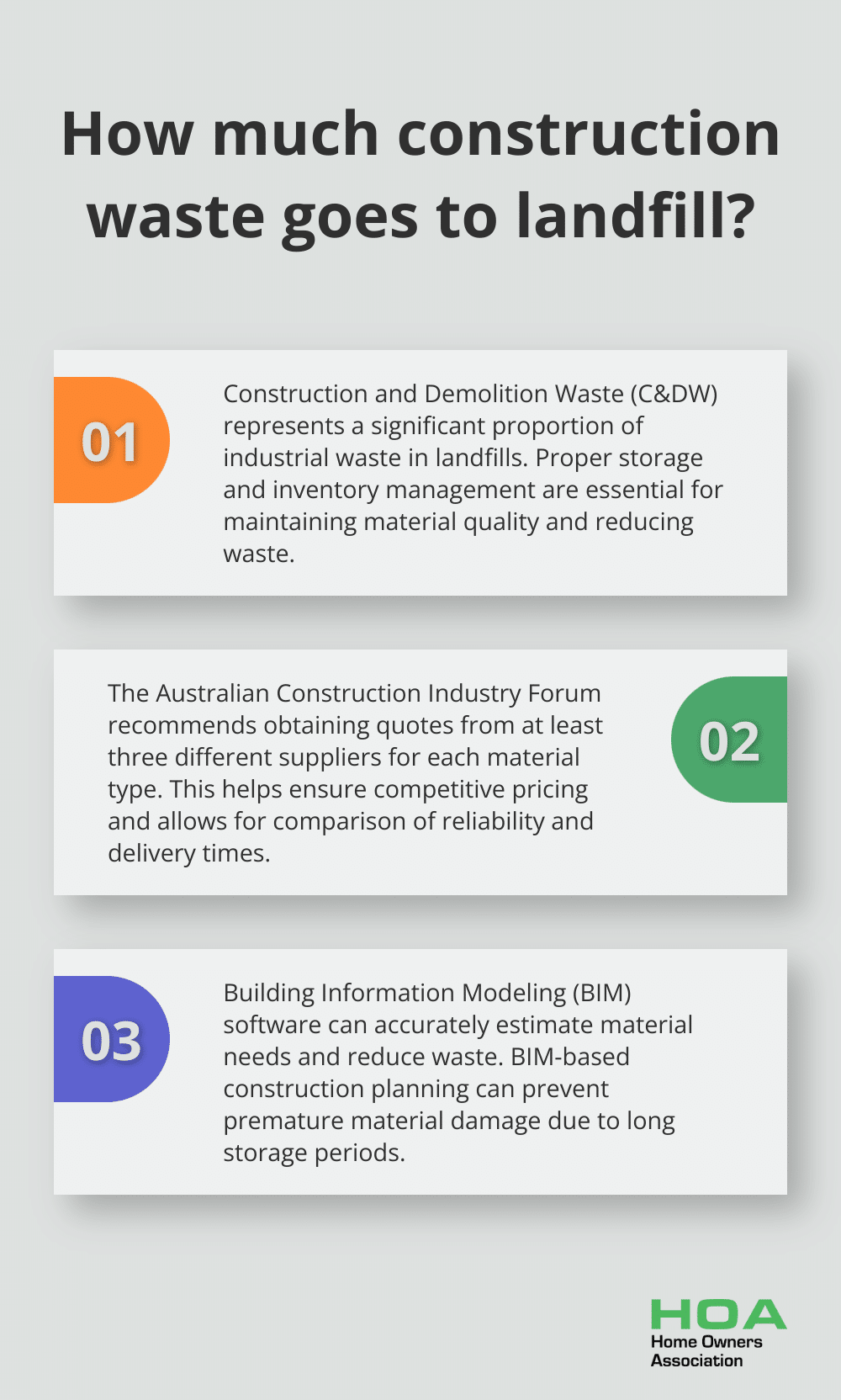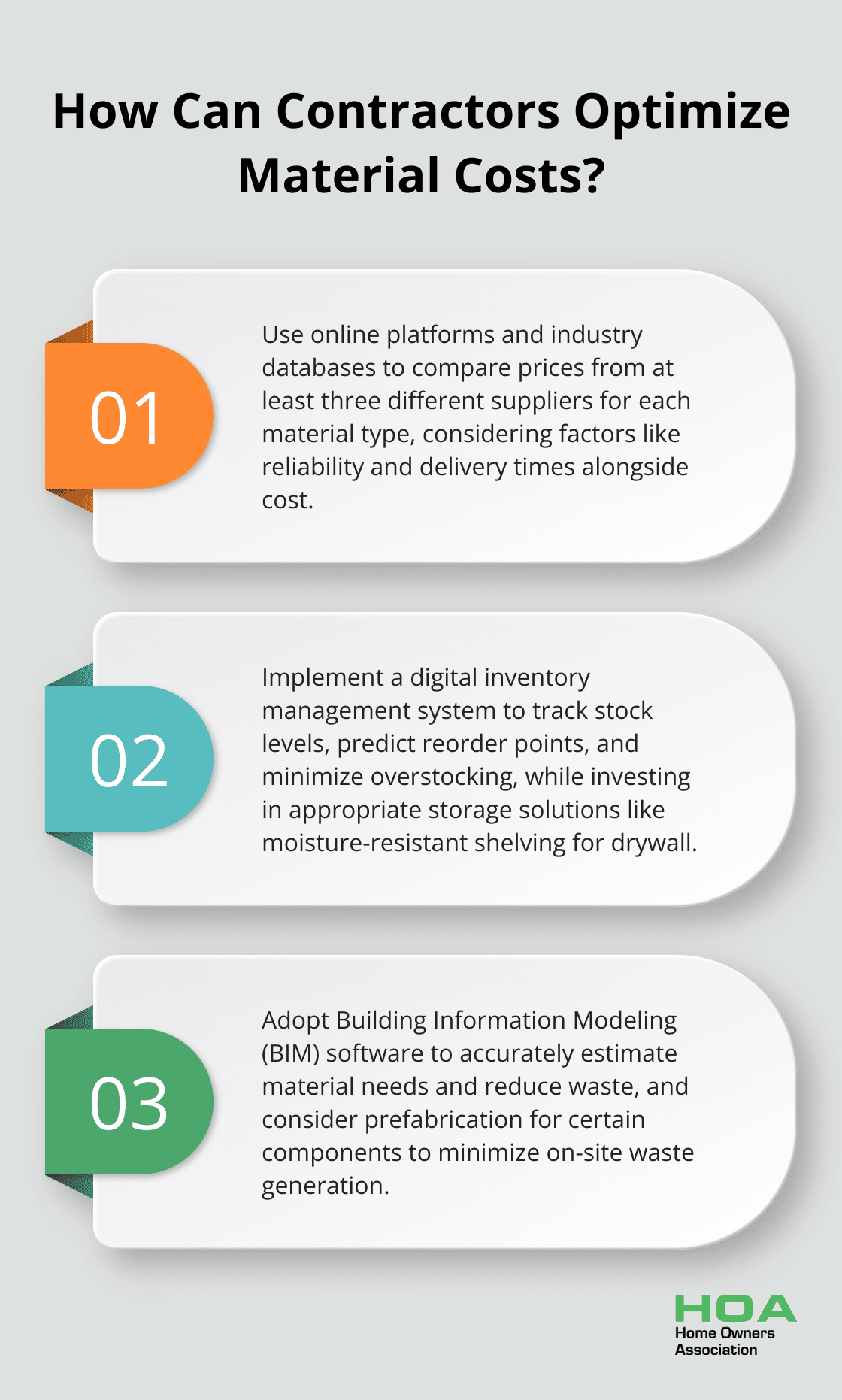
At Home Owners Association, we understand the importance of choosing the right materials for your construction projects. Stock building materials are a cornerstone of efficient and cost-effective construction.
In this post, we’ll explore what stock building materials are, their advantages, and how to select and manage them effectively. Whether you’re a seasoned contractor or a homeowner planning a DIY project, this guide will help you make informed decisions about your building materials.
What Are Stock Building Materials?
Definition and Types
Stock building materials form the foundation of construction projects. These are standard, readily available materials that manufacturers produce in large quantities and suppliers keep in stock. The range includes lumber, drywall, concrete blocks, bricks, and standard-sized windows and doors.

Lumber remains a staple, with dimensional lumber (like 2x4s) and plywood being ubiquitous in framing and sheathing. Drywall (also known as gypsum board) is the primary choice for interior walls and ceilings. For exterior work, stock materials include vinyl siding, asphalt shingles, and pre-mixed concrete. Plumbing and electrical components, such as PVC pipes and standard wire gauges, also fall into this category.
Advantages of Stock Materials
The use of stock building materials offers several key benefits:
-
Affordability: These materials are typically less expensive due to economies of scale in production.
-
Availability: Suppliers usually have these materials on hand, which reduces wait times and potential project delays.
-
Consistent Quality: Stock materials often meet specific industry standards, which ensures consistent performance.
-
Simplified Process: Standardization simplifies the design and construction process, as architects and builders can rely on predictable dimensions and properties.
Common Applications
Stock building materials find their way into virtually every aspect of construction:
- Residential Projects: They form the structure of walls, roofs, and floors.
- Commercial Buildings: Stock steel beams and concrete create the frameworks.
- Specialized Constructions: Even here, stock materials often serve as the foundation for custom elements.
DIY enthusiasts particularly value stock materials. These allow for easier planning and execution of home improvement projects without specialized ordering or fabrication. This accessibility has contributed to the growth of the DIY market.
The smart use of stock building materials leads to successful projects and significant savings. Home Owners Association members across Australia benefit from our network of suppliers, securing better prices on these essential items. As we move forward, it’s important to consider the factors that influence the choice of stock building materials for your specific project needs.
Choosing the Right Stock Building Materials
Quality and Longevity
The quality of stock building materials directly affects the durability and lifespan of your project. While it’s tempting to choose the cheapest options, higher-quality materials often provide better value in the long run. For example, untreated wood is much easier to paint or stain, particularly inside homes, as chemicals in treated lumber can interfere with finishing processes.

A study by the National Association of Home Builders reveals significant variations in the average life expectancy of common building materials. Brick siding can last over 100 years, while vinyl siding typically lasts around 60 years. Asphalt shingles may need replacement after 20 years, whereas metal roofing can last 40-70 years.
Cost and Availability Considerations
Stock materials are generally more affordable and readily available than custom options, but prices and availability can fluctuate. The COVID-19 pandemic caused significant disruptions in the supply chain, leading to shortages and price spikes in materials like lumber.
To overcome these challenges, you should work with multiple suppliers to ensure a steady supply of materials. Bulk purchasing can also lead to significant savings. (Home Owners Association members in Australia benefit from an extensive network of suppliers, often securing better prices on essential items.)
Environmental Impact and Sustainability
The construction industry accounts for a significant portion of global carbon emissions. Choosing sustainable stock materials can reduce your project’s environmental footprint. You should look for materials with recycled content, such as certain types of insulation made from recycled glass or paper.
FSC certification is proven to prevent deforestation that contributes to climate change. Additionally, you should consider the energy efficiency of materials. Low-E windows can significantly reduce heating and cooling costs over time.
Compliance with Building Codes
You must ensure that your chosen materials comply with local building codes. These regulations vary by location and are regularly updated. In bushfire-prone areas of Australia, specific materials may be required for fire resistance.
You should stay informed about the latest code changes in your area. Working with knowledgeable suppliers or consulting with local building authorities can help ensure compliance. This step is vital not only for safety but also to avoid costly corrections or legal issues down the line.
The next chapter will provide practical tips on how to purchase and manage your stock building materials effectively, ensuring you maximize your investment and minimize waste throughout your construction project.
How to Optimize Your Stock Building Materials Strategy
Research Suppliers and Compare Prices
Start your optimization process by conducting thorough research on potential suppliers. Look beyond price; consider factors like reliability, delivery times, and quality consistency. The Australian Construction Industry Forum recommends obtaining quotes from at least three different suppliers for each material type to ensure competitive pricing.

Use online platforms and industry databases to compare prices across different regions. Keep in mind that prices can fluctuate based on factors like seasonal demand and transportation costs. (For instance, the price of timber in Queensland can differ significantly from prices in Western Australia due to local supply and demand dynamics.)
Manage Inventory and Storage Effectively
Proper storage is essential for maintaining the quality of your stock materials. Construction and Demolition Waste (C&DW) represents a significant proportion of industrial waste going to landfill. Invest in appropriate storage solutions such as moisture-resistant shelving for drywall or covered areas for lumber to prevent warping.
Implement a robust inventory management system. Digital tools can help track stock levels, predict reorder points, and minimize overstocking.
Reduce Waste and Maximize Efficiency
Adopt a lean construction approach to minimize waste. Implement strategies like just-in-time delivery to reduce on-site storage needs and potential damage.
Use Building Information Modeling (BIM) software to accurately estimate material needs. BIM-based construction planning can reduce construction waste generation by avoiding premature material damage due to long periods of storage.
Consider prefabrication for certain components. Prefabrication can significantly reduce on-site waste compared to traditional construction methods.
Leverage Bulk Purchasing Strategies
Use bulk purchasing to secure better prices. However, exercise caution not to overstock perishable or trend-sensitive materials.
Form purchasing cooperatives with other contractors or join industry associations. (Members of organizations like Home Owners Association often benefit from collective buying power, securing significant discounts on stock building materials.)
Balance bulk discounts against storage costs and the risk of material degradation. The optimal purchasing strategy often involves a mix of bulk buys for stable, non-perishable items and just-in-time ordering for more volatile or specialized materials.
Final Thoughts
Stock building materials form the foundation of efficient and cost-effective construction projects. These readily available materials offer affordability, consistency, and simplified processes for both professional contractors and DIY enthusiasts. Quality, durability, cost-effectiveness, and availability should guide your selection process, especially when considering potential supply chain disruptions.

Environmental impact, sustainability, and compliance with local building codes are essential factors to consider when choosing stock building materials. Thorough research, price comparison, effective inventory management, and proper storage practices will help you maintain material quality and reduce waste. Bulk purchasing discounts can lead to significant savings, but you must balance these against storage costs and material degradation risks.
We at Home Owners Association understand the unique challenges in the Melbourne, Australia construction market. Our members receive access to trade pricing and discounts on a wide range of stock building materials. We invite you to join Home Owners Association for personalized guidance throughout your home improvement journey (our educational resources and ongoing support make us a trusted partner for homeowners and property managers across Melbourne).





